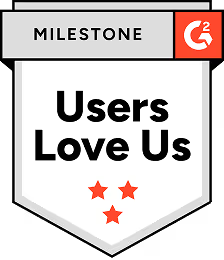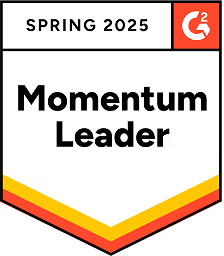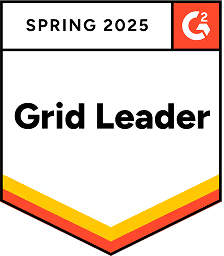Generative AI Best Practices for Enterprise Organizations
.jpeg)
Although generative AI has captured the minds of most businesses seemingly overnight, it is not just a passing trend. Its potential impact on business is profound.
As it continues to take off in the corporate world, more and more B2B organizations will actively seek AI solutions that improve their team's workflows.
With the thrill and stress of making a selection looming, it's key that revenue ops and sales enablement leaders who are responsible for integrating AI into their existing tech stack grasp the basics of AI utilization in an enterprise environment before, during and after committing to a perfect fit.
In other words, making sound choices first demands knowledge of Generative AI best practices. This blog aims to equip decision-makers with an overview of AI best practices to keep in mind as they search for the right solution and plan its imminent implementation into their business.
AI-Powered Offerings: Four Areas of Consideration
Evaluating AI platforms and tools? It's essential to know your choices to select what suits your enterprise organization best.
Before getting into more specific AI best practices for enterprise organizations, understanding the different types of AI-driven platforms and tools available is a best practice in and of itself.
When evaluating AI technology, four types of solutions exist for B2B companies:
- foundational companies building AI models with deep tech expertise
- horizontal players who focus on mass-appeal tools
- vertical solutions tailored to particular use cases and workflows
- platform giants that are integrating Generative AI capabilities into their existing platforms
Each bucket has its own approach, so enterprise organizations must understand what's out there before deciding which path forward will best complement their needs.
Area One: Foundational Companies
Foundational companies with deep tech expertise.
The first grouping of AI-powered offerings is comprised of the companies building the AI models themselves. We also refer to this bucket as foundational companies. It includes companies that were, comparatively, first-movers in AI development and have deep tech expertise plus the required resources to build proprietary large language models.
Most foundational companies are likely open-sourced and share their models with other companies. Currently, companies like OpenAI of GPT-4 fame, dominate this space, but other players like Cohere, Anthropic, and Stability.ai (and likely Google and Amazon in the near future) also represent.
Area Two: Horizontal Companies
Horizontal players who focus on customer-facing tools.
The second grouping contains companies that specialize in mass-appeal AI applications. These companies have expanded laterally on the text-generation capability of general-purpose models like those from foundational companies like OpenAI.
Think of players in this space as creating a range of content from scratch - they can generate anything from blogs, to ads, to emails, to real estate listings, to menus using ingredients from your fridge and more, thanks to their broadly appealing text expansion capabilities.
Many end users are already familiar with horizontal-AI companies like Jasper.ai, Copy.AI, WriteSonic, and the like. They are relatively new and mostly digital publishers who are designed to address content creation broadly with more user-friendly interfaces. But they tend to focus on how their audiences generate content, not the precision of the content output itself.
Area Three: Vertical Companies
Verticalized platforms tailored to particular use cases and workflows.
The third grouping, vertical companies, specializes in solving critical workflows of business. Platforms from this bucket will serve industries that rely on large amounts of data and content, like the medical or legal sector. As more vertical AI solutions are established to meet the workflow needs of specific business use cases, fields with a high volume of data and output will see efficiencies that were at one point unimaginable.
Vertical companies offer solutions that tend to go very deep, and address every step of an entire use case's workflow; thus enabling teams to truly leverage the new efficiencies AI can unlock for them around a particular business pain.
Of the four buckets, this is where Regie.ai nestles in. Our mission at Regie.ai is to unlock more buyer conversations through personalization at point and scale. To do that, we are building THE Generative AI Platform for enterprise sales teams that personalizes content using data unique to their business. We care a whole lot about the sales development rep workflow, and we are on a path to unlock true personalization at scale capabilities for front-line teams, using the power of Generative AI to bring them heightened levels of productivity when prospecting.
If you're committed to driving personalization into your entire sales workflow, chat with team Regie.ai today.
Area Four: Platform Players
Platform giants that are integrating Generative AI into their existing products.
The fourth bucket is made up of platform players such as Google and Microsoft, who are not known for Generative AI but are now incorporating it into their core product offerings. They own significant platforms in their respective industries and are working on bolting AI onto core parts of what they do currently.
Where do we go from here?
Each of these four categories has sparked interest and anticipation within enterprise organizations, but much remains to be seen for how the technological landscape will play out in the grand scheme of things. It's reasonable to expect at least some compression, and/or shifts in dominance.
Overall, understanding the differences in AI-powered offerings is an essential best practice for enterprise organizations when choosing the right solution, especially as collective AI literacy is in its infancy. The choice of which type of tech to evaluate will depend on the specific needs and objectives of the organization.
For now, let's take a look at two other best practices that will be important to incorporate into your AI solution research process.
Sandwiching the AI between humans
When you think about getting the most out of AI and making sure your message is on-target, it's wise to bookend this new technology with a human. Placing AI in the center of the creative process will enable it to be surrounded by a human support system that can help guide its output to stay within brand guidelines.
AI has revolutionized content creation, enabling organizations to generate massive amounts of content quickly. However, simply relying on AI to create content with little to no preparation or human intervention can lead to inconsistent messaging and poor-quality content outputs.
To avoid these pitfalls, enterprise organizations should look for solutions that support human workflows at the start and end of the content creation process.
When it comes to content creation, AI does its best work in the middle of the process. This is where it can most effectively "join a team." Sandwiching AI between the human touch means that there are people on both sides of the content creation process to help guardrail the AI and ensure its outputs are on brand, consistent and not an editing nightmare.
To prioritize human involvement in the AI-powered content assembly line, enterprise organizations should establish a content committee as part of their overall strategy. This dedicated team plays a crucial role in defining the parameters for AI-powered content creation, such as the target audiences, key topics, pain points and value propositions that the content should be built around.
By guard railing the AI with company data before it generates any content, the committee can help ensure that the written content it does produce, like emails, blogs, social posts, etc., is using the brand-approved language that's most impactful for a given audience or purpose. To bookend the process, a human should always look over the AI-generated content to guarantee accuracy and ensure that it stays within certain guidelines.
This is also the time to add some personality or embellishments to what the AI created. You don't want to let your AI-generated material lose its distinctive flavor. Just as teams already rely on editors for human-written content, AI-generated content is no different. Enterprise organizations should make sure their process has this extra step before any AI-generated content is sent out. It should be a human, not AI, that's actually pressing send or publish.
Overall, to make sure AI is a helpful tool in the content creation process, it's important to recognize that there must be a balance between human and machine.
Organizations need to determine their desired outcomes, put specific standards into place, and then let AI take over from there. Although AI can help manage the bulk of the work, people are still required for final review. With the thoughtful implementation of best practices for AI adoption in content production, organizations will find success with this revolutionary technology.
Always Remember the Workflow
Haphazardly implementing AI or relying on thin horizontal applications will only lead to issues down the line; by effectively integrating AI into your operational workflow now, you can ensure your organization is well-positioned for scalable success in the future.
AI solutions aren't only new, they're also exciting. Right now decision-makers are learning that some of their biggest operational bottlenecks can be addressed using AI, and they're ready to dive in and see the results. This is the perfect catalyst for change, but can also cause confusion. There isn't a well-traversed pathway for leaders to follow when it comes to finding the right AI solution for them (or is there?), so it's important to tread carefully.
One foothold that is likely to be overlooked is considering how AI will fit into a workflow overall. Let's take the lifecycle of a deal, for instance, and where AI-generated content plays into that to improve the experience. When it comes to AI for enterprise sales teams, ask how AI-generated emails will fit into your prospecting, engagement, retention, renewal, and expansion workflows. Use the following questions to sift through the solutions you're considering:
- What integrations does the tool or platform support? - When evaluating an AI tool or platform, it's essential to see if it offers a Sales Engagement Platform (SEP) and email inbox integration. It's also worth considering how well the software plays with your existing tech setup beyond just email.
- How can this AI tool or platform be used to tailor and customize the user experience? - AI is frequently leveraged to deliver personalized experiences efficiently and cost-effectively. This is the primary motivator for many businesses when it comes to integrating AI into their operations, so organizations must evaluate how a platform can support personalization efforts, as well as how this will influence existing team workflows. If implementing these personalization features does not line up with your organization's established practices, adoption may be challenging.
- What features does this tool or platform offer to facilitate collaboration? - The work of your sales crew affects the overall GTM movement in your organization. Preferably, the provider you select should reflect that flow. Discover if the solution you're looking at helps foster collaboration not only within your sales team but also among multiple departments with features such as comments and file-sharing.
- Where will you keep your AI-generated content? - Data storage is an important factor that often gets overlooked, especially when there's a surge of information to manage. Do you need extra space outside the platform or does your chosen solution already have its own built-in CMS? Will the content be convenient for your team to access?
- What insights does the AI tool or platform provide to measure performance? - You'll need feedback on the performance of your AI-generated content. Does the solution you're considering offer that? Evaluate the level of detail and granularity of the analytics, such as assessments of whole sales paths plus single emails, from headline to CTA.
- Is the AI being used generic or customized for sales outputs? - Determine if the option you're evaluating is using a general purpose AI model, or trained to communicate in a sales posture and can discern nuances in attitude across diverse emails and customer profiles. Extra credit: can it use your own company information and customized inputs to better tailor the AI outputs?
- What security measures are in place to safeguard your data? - Don't take chances with your data security - be sure the platform you select is SOC2 and GDPR compliant for maximum protection.
As you ask the questions above, pay attention to what else pops up for you. Hopefully, additional inquiries that are unique to your team will reveal themself and ultimately help you rule out solutions that are a poor fit.
By implementing a workflow-compatible Generative AI platform instead of an AI tool, or point solution, companies will have a higher likelihood that AI becomes the transformational solution for their teams' needs they were hoping for.
Use These Best Practices and Think Critically
The increasing awareness and accessibility of AI have created a pressing need for enterprise organizations to explore AI solutions that will best fit their go-to-market motions. To take advantage of Generative AI, organizational leaders must observe these best practices:
- Understand the different types of AI-powered offerings available in the market and select which approach best meets the specific needs and objectives of your business
- Define your content goals and plans for preserving the human in the AI creation process
- Establish expectations for the changes AI should and will introduce to your workflows
For many teams, it's time to embrace the potential AI holds for growth and innovation. By following these best practices, you can search for your perfect AI solution with confidence.
FAQs
Read more posts
View all BlogsNeed more help?
If you still have questions, make sure to check out our Help Center: there, you'll find all the tips & advice you'll need to get your team up & running with Regie.ai.









